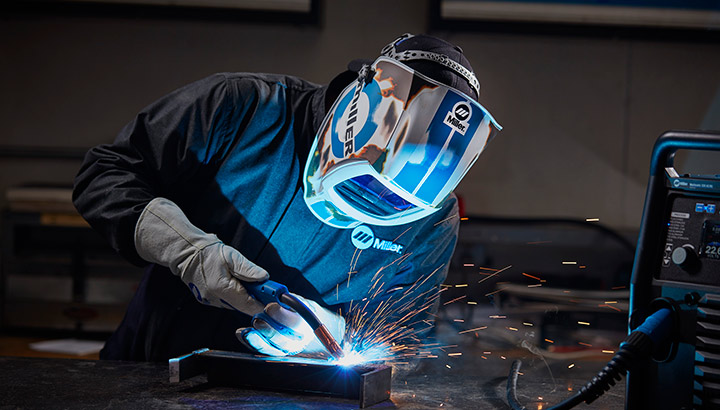Comprehending Welding WPS: Comprehensive Guide for Welders
Comprehending Welding WPS: Comprehensive Guide for Welders
Blog Article
The Ultimate Overview to Welding WPS Procedures: A Detailed Overview for Welders
In the elaborate world of welding, Welding Treatment Specs (WPS) serve as the foundation of making certain quality, consistency, and safety and security in welding procedures (welding WPS). As we delve right into the different components of a WPS and explore the intricacies of certification and certification, we will uncover the essential role these procedures play in the world of welding.
Value of WPS Procedures
Recognizing the value of Welding Treatment Requirements (WPS) treatments is vital for guaranteeing the top quality and integrity of bonded frameworks. WPS treatments work as a roadmap for welders, laying out the essential steps, parameters, and products needed to achieve a sound weld. By adhering to WPS standards, welders can guarantee consistency in their work, bring about reputable and structurally sound welds.
Among the primary factors why WPS procedures are crucial is their duty in maintaining weld high quality and integrity. Adhering to the specified welding criteria and methods laid out in the WPS assists avoid defects such as porosity, splitting, or incomplete combination, which can compromise the strength and longevity of the weld. Additionally, WPS treatments are important for ensuring conformity with sector criteria and codes. By following established WPS guidelines, welders can show that their work satisfies the essential needs for safety and quality, giving assurance to clients, examiners, and governing bodies. Basically, the importance of WPS procedures can not be overstated, as they are essential to achieving constant, high-grade welds that satisfy sector standards and specs.

Components of a WPS
A Welding Treatment Spec (WPS) typically comprises essential parts that information the particular needs for executing a weld, guaranteeing uniformity and quality in the welding process. The vital parts of a WPS consist of vital variables such as base steels, filler metals, preheat and interpass temperatures, welding procedures, shielding gases, welding settings, and post-weld heat treatment needs.
Base steels refer to the materials being signed up with, while filler metals are used to fill the gap between the base steels during welding. Preheat and interpass temperatures are vital for regulating the warm input and preventing issues like splitting or distortion. The welding procedure outlines the certain strategy to be utilized, whether it's gas steel arc welding (GMAW), shielded metal arc welding (SMAW), or one more technique. Securing gases safeguard the weld pool from climatic contamination. Welding placements define the alignments in which welding can be performed. Post-weld heat treatment may be needed to relieve tensions and enhance the weld's homes. An extensive understanding of these components is vital for producing a reliable and detailed WPS.

Credentials and Qualification
Having actually established the vital elements of a Welding Procedure Specification (WPS), the focus now changes in the direction of the critical facets of certification and accreditation in welding methods.

Accreditation, on the other hand, is the official recognition of a welder's credentials by an appropriate certification body or organization. Welding accreditations are usually based upon the certain welding procedures, products, and placements a welder is certified to function with. Holding a valid welding qualification look at this web-site demonstrates that a welder fulfills industry standards and is competent to perform welding tasks to the required specifications.
Producing a WPS
To establish a Welding Treatment Requirements (WPS) that fulfills sector criteria, cautious consideration of welding processes, materials, and functional parameters is crucial. The initial action in producing a WPS is to determine the welding procedure to be made use of, such as gas steel arc welding (GMAW) or secured steel arc welding (SMAW)

Carrying Out and Keeping Track Of WPS
Upon wrapping up the comprehensive Welding Procedure Specification (WPS) that thoroughly details welding processes, materials, operational specifications, and top quality assurance steps, the focus moves to effectively applying and checking the well-known treatments. Execution includes ensuring that all welders involved in the project are familiar with the WPS and follow it carefully throughout the welding procedure. This calls for offering appropriate training and guidance to guarantee adherence to the specified treatments. Checking the WPS includes constant oversight to validate that welding tasks align with the recorded specifications. Assessments, testing, and high quality control procedures are important parts of the tracking process to determine any type of issues or deviations without delay. Normal audits and evaluations of the welding procedures assist in maintaining consistency and high quality throughout the job. Efficient application and surveillance of the WPS are critical for making sure the integrity, stamina, and security of the welded joints, ultimately contributing to the general success of the welding task.
Conclusion
Finally, understanding and following Welding Treatment Specs (WPS) is critical for welders to make certain top quality, uniformity, and safety in their work. By knowing the components of a WPS, acquiring proper certifications and accreditations, developing in-depth treatments, and applying and monitoring them effectively, welders can boost their skills and efficiency in welding techniques. Abiding by WPS treatments is vital for creating top notch welds and meeting market requirements.
In the elaborate world of welding, Welding Procedure Specs (WPS) serve as the backbone of making sure top quality, uniformity, and security in welding procedures. The welding procedure describes the particular method to be used, whether it's gas metal arc welding (GMAW), secured steel arc welding (SMAW), or an additional method.To establish a Welding Treatment Specification (WPS) anchor that meets industry criteria, careful factor to consider of welding processes, products, and functional parameters is necessary. The first action in creating a WPS is to recognize the welding procedure to be utilized, such as gas steel arc websites welding (GMAW) or protected steel arc welding (SMAW)Upon wrapping up the detailed Welding Procedure Requirements (WPS) that diligently information welding processes, materials, functional parameters, and quality assurance procedures, the focus moves to properly implementing and keeping track of the well-known procedures.
Report this page